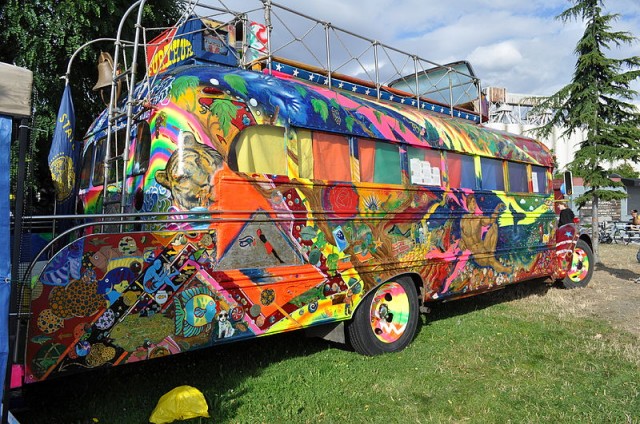
In June of 1964, Ken Kesey was a hot young writer. His novel, "One Flew Over the Cuckoo’s Nest," had been a best-seller and then a hit Broadway play. He needed to get to New York City, because his publisher was bringing out his second novel, "Sometimes A Great Notion." And some of Kesey's pals wanted to make the trip, too.
"The World’s Fair was there, and so a bunch of us wanted to go," says Ken Babbs, who had met Kesey at Stanford in the late '50s. After a stint as a Marine helicopter pilot that took him to Vietnam during the war's earliest stages, Babbs returned to Stanford and reconnected with Kesey.
Kesey, Babbs and friends were experimenting with filmmaking and with LSD. Kesey had encountered the drug while volunteering for a CIA-sponsored test at the Menlo Park VA hospital. So the trip to New York, to be made in a 1939 International Harvester school bus painted in wild colors and named "Further" (a.k.a. "Furthur"), was meant to be a psychic journey as well as a physical one.
"We had this movie that we were going to make called 'Intrepid Travelers,' and this merry band of pranksters look for a cool place — the cool place that exists in you in your mind and your body," Babbs says.
With that vision in mind, Babbs and the rest of the Merry Pranksters boarded the bus at Kesey's home in La Honda. And at first, they didn't go anywhere.
"We got the bus cranked up, we were ready to go, firing on all cylinders, headed out across the bridge there at La Honda. And ... the engine died," Babbs recalls.